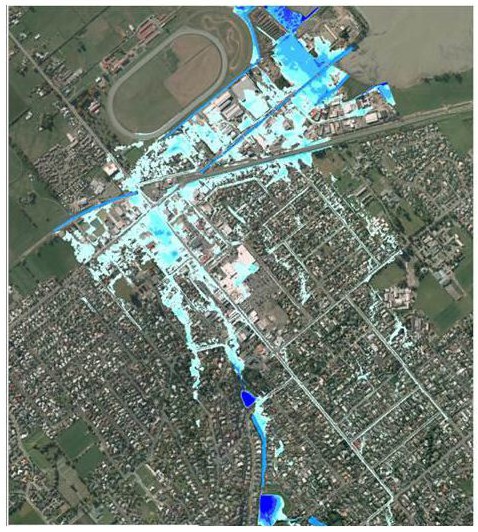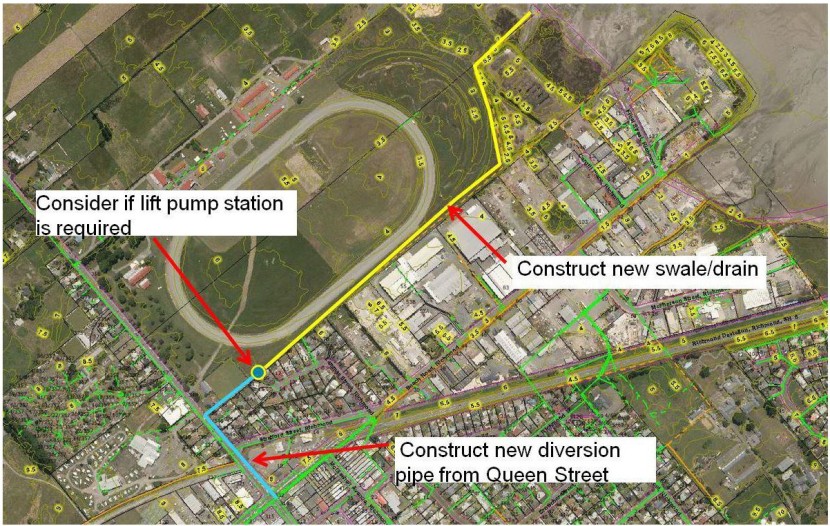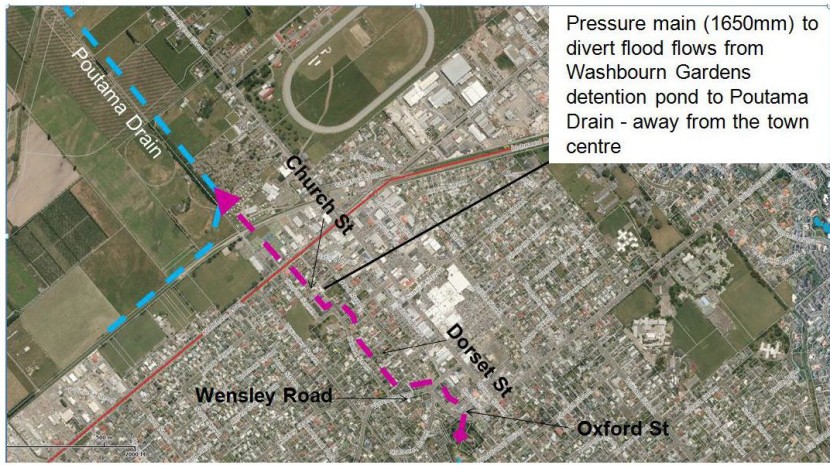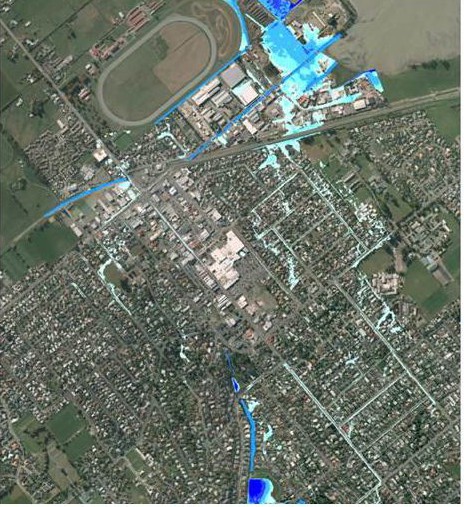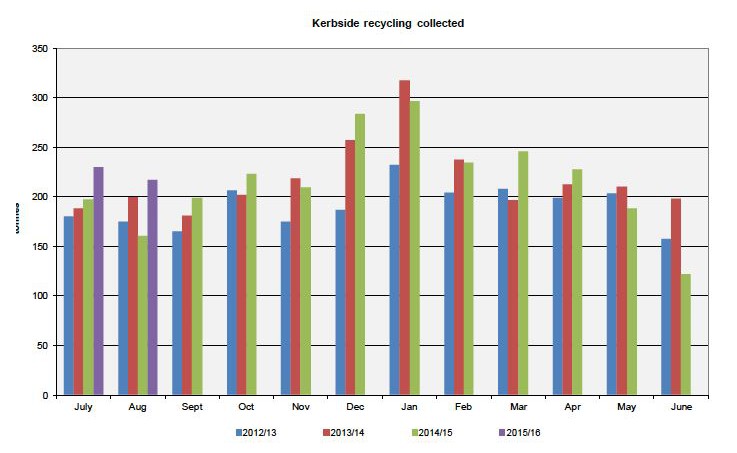Tagged: Poutama drain
Engineering services committee (24 September)
The engineering services committee was held on 24 September 2015. Apologies for lateness were received from the mayor, Cr Edgar, and Cr Bouillir. All other councillors were in attendance.
The agenda included the following items: (1) chairs report, (2) activity management plans, (3) Richmond’s central business district storm water plan, and (4) activity update from the manager.
Chairs report
I don’t normally talk about the chairs report as there is never much in them. However, I thought I would highlight a joint Tasman and Nelson council initiative that I think holds a lot of promise. The initiative I am talking about is the creation of a single set of planning and engineering standards for both Tasman and Nelson councils. In my opinion, it will provide greater levels of certainty (and cost savings) for developers working across both regions. This can only be positive in terms of cost savings for the building industry (and potential home buyers).
For this reason, I asked the chair to comment on the mood of the Nelson councillors (Cr Mike Ward, Cr Brian McGurk) who make up the joint steering group (which also comprises Cr Norris, and Cr Bryant), given the potential efficiencies and cost savings for the wider community that can be made. The chair confirmed that the mood was very positive and that Nelson councillors were keen to see this initiative succeed.
I only hope that it is not derailed in the same sense that the Yorke valley initiative has been, from what appears to be Nelson council wanting a greater share of the benefits. Like all good partnerships, both parties have to win equally.
Activity management plans
As part of the long term plan process, each of the four departments of council had to prepare an activity management plan (AMP) for all the things they planned to do over the next 10 years. For engineering, that involved writing detailed plans for: roads, water, and waste. The plans are drafted to fit within the financial umbrella of the annual and long term plans and describe in detail all the projects council will be doing and when. If funds are not allocated it is not planned to be done.
The annual and long term plans are just budgets. They show where the council wants to land the plane. Like all budgets the spending planned within them can change. Where there are changes, the annual report will show whether council stayed within its forecasted spending (the budget) or fell outside of it (resulting in either a surplus or deficit). For example, council might be asked to increase its service levels for grass cutting. If council agreed to do that then the level of activity and cost would increase, and the annual plan would report a deficit against the forecasted expenditure. Last year, council achieved a surplus (it earned and saved more money than it had planned to spend).
As I read through the transport AMP, I noticed that $1.04 million was still allocated against road works for the Salisbury road\Queen street intersection. My recollection of the draft AMP (that was presented with the long term plan) was an explicit reference to “traffic lights” at this intersection. The revised (and final) AMP presented to this committee appeared to have changed the words (by removing the reference to “traffic lights”), but had keep the original figure of $1.04 million being spent at this intersection.
Given the lack of community support for traffic lights at this intersection, I questioned this line entry in the transport AMP.
I was advised that staff had taken on board the communities desire not to have traffic lights at this intersection and for that reason had removed the words (“traffic lights”). I congratulated staff on this, but questioned why there was still a need to spend $1.04 million at this intersection. Surely, expenditure would be lower, if they were no longer planning to install traffic lights. In fact, if we had vetoed traffic lights, there was nothing to do at this intersection?
The explanation provided was that the $1.04 million would be used to examine the whole of Salisbury road to see what traffic solutions were needed (if any). I was also told that the amount was planned to be spent outside the next three years, so there was still time in the next LTP process to remove or change this line item.
I pointed out to councillors (and staff) that the words in the AMP did not refer to the whole of Salisbury road, but instead were associated only with the intersection. If the intention had changed, then the words in the AMP also should have changed – but they had not. I also found it strange that the amount of funds to be spent on this intersection had not changed from when they were originally intended to be spent on traffic lights. Surely, if no traffic lights were contemplated, the funding should have reduced to reflect merely investigatory work – which should not amount to $1.04 million.
I also pointed out that the AMP had already allocated roughly $500,000 to another part of Salisbury road (the William street intersection). In my mind, if the whole road was being reviewed (and a solution would not involve traffic lights) what other parts of Salisbury road required money being spent. As far as I was aware staff had only identified two areas of concern on Salisbury road.
If the Queen street intersection would not have lights, and William street already had funds allocated to it, why did we need to budget for $1.04 million for other parts of Salisbury road. It just did not make sense or add up. Accordingly, I invited councillors to remove the the $1.04 million, and just use the $500,000 (allocated to William street) for any Salisbury road reviews.
Unfortunately, I received no support from any councillors, and the AMP was approved as presented.
Richmond central business district – storm water plan
As everyone will be aware, Richmond’s central business district sunk beneath the waves during the 2011 and 2013 floods. To address the risks of future flooding, council has set aside a budget in the LTP ($14.7 million) to provide a solution.
Flood modelling for the current state of Richmond’s storm water system (for a 1 in 100 year flood event) is illustrated below.
A number of storm water solutions were presented to council in a series of council workshops held earlier this year. From those discussions, 3 options were presented in the report to council, which included the preferred option (a gravity pressure pipeline system). The other two options were using Beach road’s drain, or using a newly constructed outlet near the racecourse.
I will briefly outline all three options.
Option 1 (Beach road)
The estimated cost was $14.7 million. This essentially involved increasing the capacity of the Beach road and Queen street drainage system. Disadvantages of this option were the poor condition of Beach road drain and the impact of the tide. A high tide would prevent much of the water coming down the system into the sea.
Option 2 (Racecourse drain)
The estimated cost was 13.2 million. Instead of increasing the capacity of Beach road drain, a new drain would be constructed along the racecourse boundary (where the croquet club are currently located). The main disadvantages of this option was the cost of new piping and disruption at the Gladstone road intersection.
Option 3 (Oxford street pressured pipe system)
The estimated cost was $13.9 million). This option utilised the existing pipes in Oxford street and pressured the water (to move faster through the existing pipes) from Washbourn gardens to poutama drain (which runs along the railway reserve and then turns parallel to Queen street behind Club Waimea). To mitigate flood waters above Washbourn gardens (eg in Jimmy Creek), the pipe under Washbourn road would be increased in size. The main disadvantage of this option is the cost of increasing the capacity of poutama drain.
Flood modelling for this option showed the greatest improvement (as illustrated below).
Council received the report and approved further development of option 3.
Activity update
Highlights from the engineering manager’s report include:
- Footpaths. Hill Street footpath (between Queen Street and William Street) is being reinstated as part of the ultra fast broadband (UFB) roll out. Chorus is paying for this portion of the work.
- Lighting. The LED upgrade continues with 187 LED street lights installed in Richmond (Salisbury Road to Washbourn Drive). The LED residents survey has received 22 responses (77% preferring the new LED lights). One of the benefits of LED light is the reduced upward spill. A number of residents (81%) have noticed an improved clarity in the night sky. The survey is located at www.tasman.govt.nz/council/media-centre/public-notices/led-streetlights-questionnaire/.
- Rural road maintenance. Lots has happened in this space, including: culvert upgrades (Motueka valley highway, Tadmor-Glenhope Road, Hoult Valley Road, George Harvey Road, and Hiwipango Road), metalling (Aniseed Valley Road, ozens Road, Eighty-Eight Valley Road, Vaton Valley Road, Grooby Road, Martin Road, Pine Hill Road, Rocky River Road, Sunday Creek Road, and Wills Road), tree removal (Eighty-Eight Valley Road, Wai-iti Valley Road, Aniseed Valley Road, and Neudorf Road), advisory sign upgrades (Korere-Tophouse Road and Kerr Hill Road), and slip removal (Riwaka-Kaiteriteri Road, Baton Valley Road, Riwak-Sandy Bay Road, Motueka Valley Highway, and Stanley Brook Hill).
- Wangapeka road. This issue was raised during the public forum at the last meeting. Essentially, the road is the sole access route for 3 residential homes (and a forestry block) and is being washed away by the river. In the past landowners have constructed a rock wall, which has since been washed away. Wangapeka river is a class “Z” river, which according to council policy means any erosion control requires a 50% contribution from the landowner. Cost of any work could be up to $100,000. Council has held discussions with landowners and continue to seek an agreeable solution for all parties.
- Rivers. For the July period river maintenance was $131,000, which was less than the projected monthly expenditure of $167,000 (roughly $2 million per annum).
- Jackett Island. The sand bag wall was inspected on 7 September 2015. The survey confirms the long term trend of rising beach levels to the north and lowering beach levels to the south of the property
- Waste. The new kerbside recycling has now bedded down with all bins now delivered. Overall volumes for July and August 2015 were up 25% on the same period last year.
Agenda and minutes
The agenda and minutes are located at www.tasman.govt.nz/council/council-meetings/standing-committees-meetings/engineering-services-committee-meetings/?path=/EDMS/Public/Meetings/EngineeringServicesCommittee/2015/2015-09-24.
